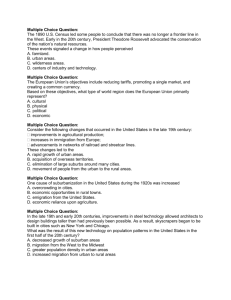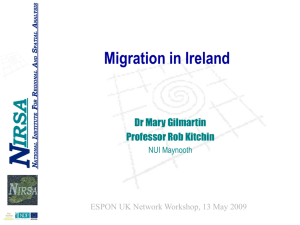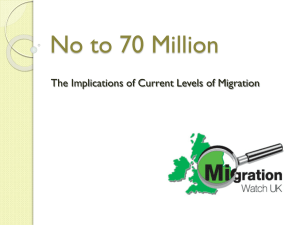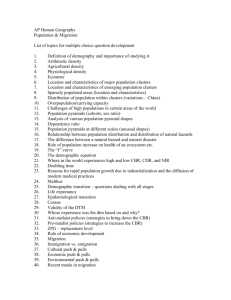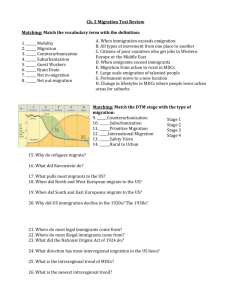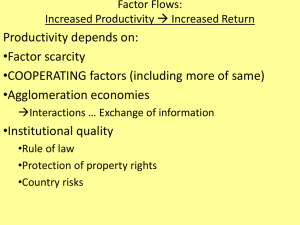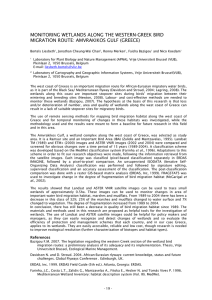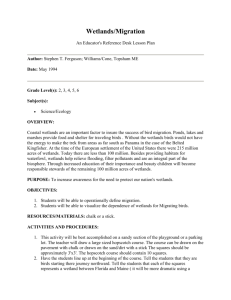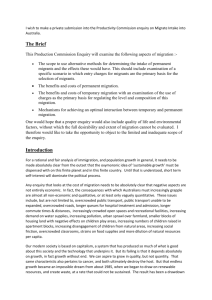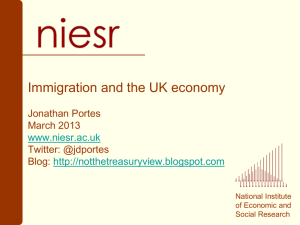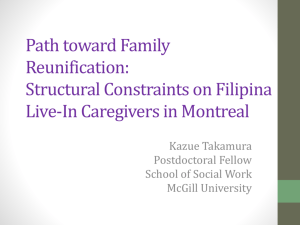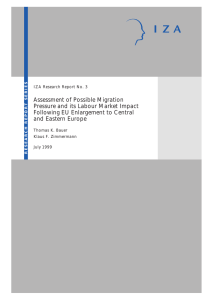Government
advertisement
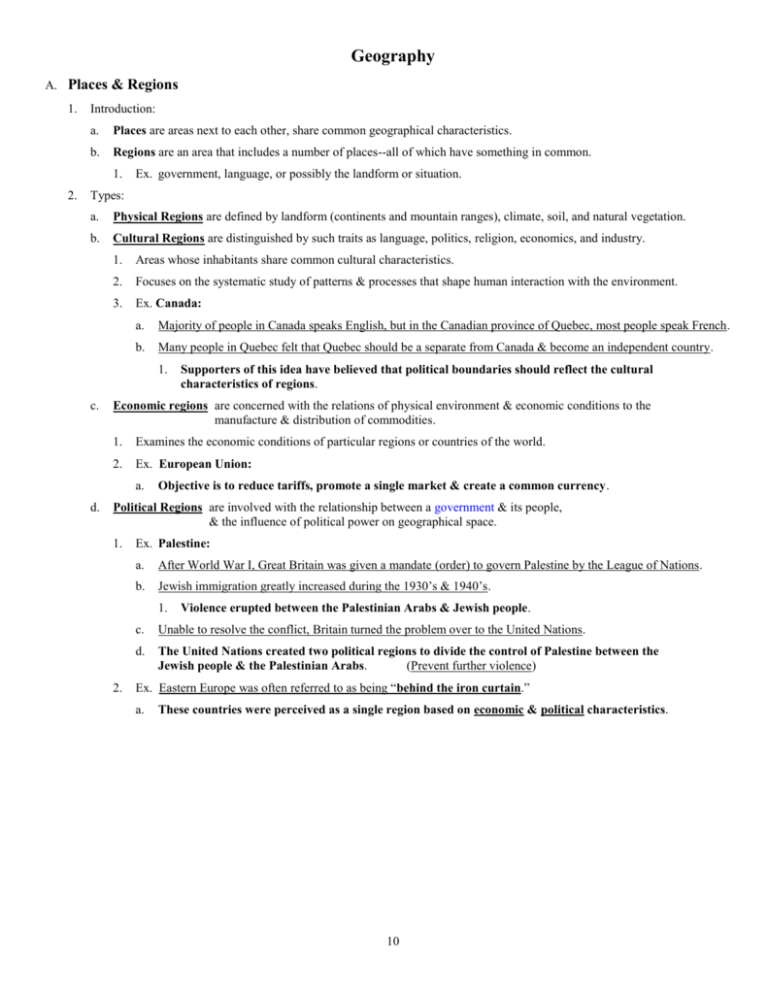
Geography A. Places & Regions 1. Introduction: a. Places are areas next to each other, share common geographical characteristics. b. Regions are an area that includes a number of places--all of which have something in common. 1. 2. Ex. government, language, or possibly the landform or situation. Types: a. Physical Regions are defined by landform (continents and mountain ranges), climate, soil, and natural vegetation. b. Cultural Regions are distinguished by such traits as language, politics, religion, economics, and industry. 1. Areas whose inhabitants share common cultural characteristics. 2. Focuses on the systematic study of patterns & processes that shape human interaction with the environment. 3. Ex. Canada: a. Majority of people in Canada speaks English, but in the Canadian province of Quebec, most people speak French. b. Many people in Quebec felt that Quebec should be a separate from Canada & become an independent country. 1. c. Economic regions are concerned with the relations of physical environment & economic conditions to the manufacture & distribution of commodities. 1. Examines the economic conditions of particular regions or countries of the world. 2. Ex. European Union: a. d. Supporters of this idea have believed that political boundaries should reflect the cultural characteristics of regions. Objective is to reduce tariffs, promote a single market & create a common currency. Political Regions are involved with the relationship between a government & its people, & the influence of political power on geographical space. 1. Ex. Palestine: a. After World War I, Great Britain was given a mandate (order) to govern Palestine by the League of Nations. b. Jewish immigration greatly increased during the 1930’s & 1940’s. 1. 2. Violence erupted between the Palestinian Arabs & Jewish people. c. Unable to resolve the conflict, Britain turned the problem over to the United Nations. d. The United Nations created two political regions to divide the control of Palestine between the Jewish people & the Palestinian Arabs. (Prevent further violence) Ex. Eastern Europe was often referred to as being “behind the iron curtain.” a. These countries were perceived as a single region based on economic & political characteristics. 10 B. Human Environmental Interaction 1. Globalization – is a process in which connections around the world increase and cultures become more alike. a. Cultural convergence (groups) of different cultures blending together. (Key is the interaction of people) b. Relies on three forces for development: the role of human migration, international trade, and rapid movements of capital & integration of financial markets. c. Ex. Change in global trade is that trade issues between countries are often replaced by trade issues between regions. 1. Led to the change of the formation of international trading blocs, such as North American Trade Agreement & the European Union. 2. Immigration - is defined as settlers coming into a country of which one is not a native for permanent residence. a. Departure from one's native land to settle in another. b. Ex. United States: 1. From 1820 to 1870 nearly 7.4 million people entered America during this period. 2. People predominantly from Great Britain, Ireland, Scandinavia, Germany and China. a. 3. In 1862 congress passed the Homestead Act to encourage people to settle west of the Mississippi river. Migration – is the geographical movements of individuals or groups for the purpose of permanently resettling. a. The basic motive was economic pressure, as areas of low population density attracted people from high-density areas where economic opportunity was low. The desire for religious and political freedom has also been important. b. The great migration to the U. S. was spurred in large by the effects of the industrial revolution. New technology, inventions, materials, concepts of self government and the rights of man. c. Examples: 1. Large migration from Europe to the U. S. in the late 19 th century was contributed to the U. S. industrialization attracting laborers from Europe. 2. In Cuba rebel forces led by Fidel Castro overthrow the Government. 3. a. Castro’s communist dictatorship seized privately owned farms & factories. b. Many people fled from Cuba to the U. S. c. Based on these conditions, the reasons for this migration were economic concerns. People in the U. S. were encouraged to migrate West. a. After the 1890 U. S. Census, Theodore Roosevelt advocated the conservation of the nation’s natural resources. 1. 4. (Homestead Act, 1862) Singled a change in how people perceived wildness areas. Today, there are concerns of migration. a. Laws passed by states to protect environment. 1. Ex. Laws passed to protect the Wetlands (marshes & swamps). a. 2. Difficult for developers (construction builders) to begin construction on wetlands The trend was motivated by an increased awareness of the environmental importance of wetlands. 11 4. Urbanization - is the increase over time in the population of cities in relation to the region's rural population. a. Caused by the increase of people moving to urban areas or the increased development of an urban area. b. Historically: (Migration from rural to urban areas) 1. Main reason for the increase in urbanization was the spread of industrialization around the world. 2. Larger & larger proportions of a population could live in cities. a. Economic forces were such that cities became the ideal places to locate factories and their workers. 1. Ex. Development of steel led to the building of skyscrapers in cities like New York & Chicago. a. c. Overall during the 19th century, rapid growth of urban areas was caused by the: 1. Increases in immigration from Europe. 2. Improvements in agricultural production. a. Caused: People to leave rural agriculture because of having less economic opportunities. 3. Advancements in networks of railroad & streetcar lines. 4. Improvements in technology. a. 5. The result of new technology caused greater population density in urban areas. (Fewer farmers needed) Result: The percentage of U. S. workforce engaged in farm labor has decreased from 52% to 12% by 1950. Suburbanization – is the general trend of city dwellers to move from the city into residential areas in ever-growing concentric circles away from the city's core. a. Caused by increased overcrowding in cities during the 1920’s. 1. Many residents choose instead to live in satellite communities called suburbs and commute to work. a. b. They wanted to raise their families in a less-congested, safer, and more relaxed atmosphere. With the widespread suburbanization in the 1920’s, increased reliance upon the automobile developed. 12
